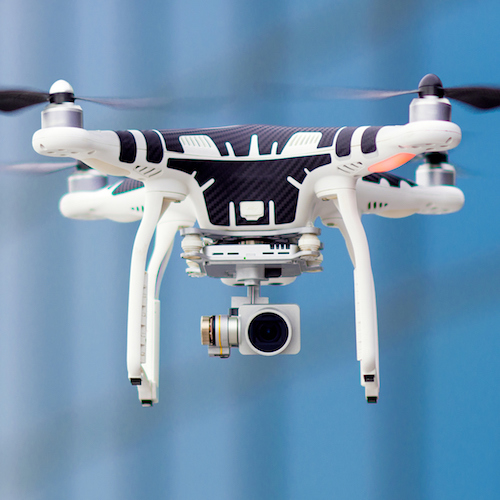Consumer Electronics
Small Drones Won't Hurt You If They Hit Your Head

Published:
Last Updated:

Maybe it is alright if commercial companies and hobbyists use drones in populated areas, in particular, if they are small. Amazon (NASDAQ: AMZN) and other companies which want to use drones for delivery may have found an ally among a small group of scientists.
In a study posted at the Annals of Biomedical Engineering, experts which ran a series of test wrote:
Regulations have allowed for increased unmanned aircraft systems (UAS) operations over the last decade, yet operations over people are still not permitted. The objective of this study was to estimate the range of injury risks to humans due to UAS impact. Three commercially-available UAS models that varied in mass (1.2–11 kg) were evaluated to estimate the range of risk associated with UAS-human interaction. Live flight and falling impact tests were conducted using an instrumented Hybrid III test dummy. On average, live flight tests were observed to be less severe than falling impact tests. The maximum risk of AIS 3+ injury associated with live flight tests was 11.6%, while several falling impact tests estimated risks exceeding 50%. Risk of injury was observed to increase with increasing UAS mass, and the larger models tested are not safe for operations over people in their current form. However, there is likely a subset of smaller UAS models that are safe to operate over people. Further, designs which redirect the UAS away from the head or deform upon impact transfer less energy and generate
lower risk. These data represent a necessary impact testing foundation for future UAS regulations on operations over people.
AIS is short for Abbreviated Injury Scale. The number “3” represents “serious” injury. The number “1” means “minor”. The number “2” means “moderate”
The drones were dropped on dummy heads from 5.5 meters. The 11 kg drones, the equivalent of 25 pounds, would hurt people badly. The 1.2 kg (2 pounds) barely did very little damage, and in some cases none at all.
Drone companies which sell small drones have a market which is potentially in the millions of units. Reseach group NPD reported that drone sales rose 117% in the year which ended in 2017 compared to the immediately previous year. The largest increase was in drones with price tags over $300. At this pace, industry revenue is exploding to sales as high as $1.3 billion this year.
Drone companies, and firms like Amazon which want to make deliveries via drone, have a new piece of research which may help bolster sales and loosen FAA restrictions. Light drones are relatively safe if they fall on people. Relatively.
Credit card companies are pulling out all the stops, with the issuers are offering insane travel rewards and perks.
We’re talking huge sign-up bonuses, points on every purchase, and benefits like lounge access, travel credits, and free hotel nights. For travelers, these rewards can add up to thousands of dollars in flights, upgrades, and luxury experiences every year.
It’s like getting paid to travel — and it’s available to qualified borrowers who know where to look.
We’ve rounded up some of the best travel credit cards on the market. Click here to see the list. Don’t miss these offers — they won’t be this good forever.
Thank you for reading! Have some feedback for us?
Contact the 24/7 Wall St. editorial team.